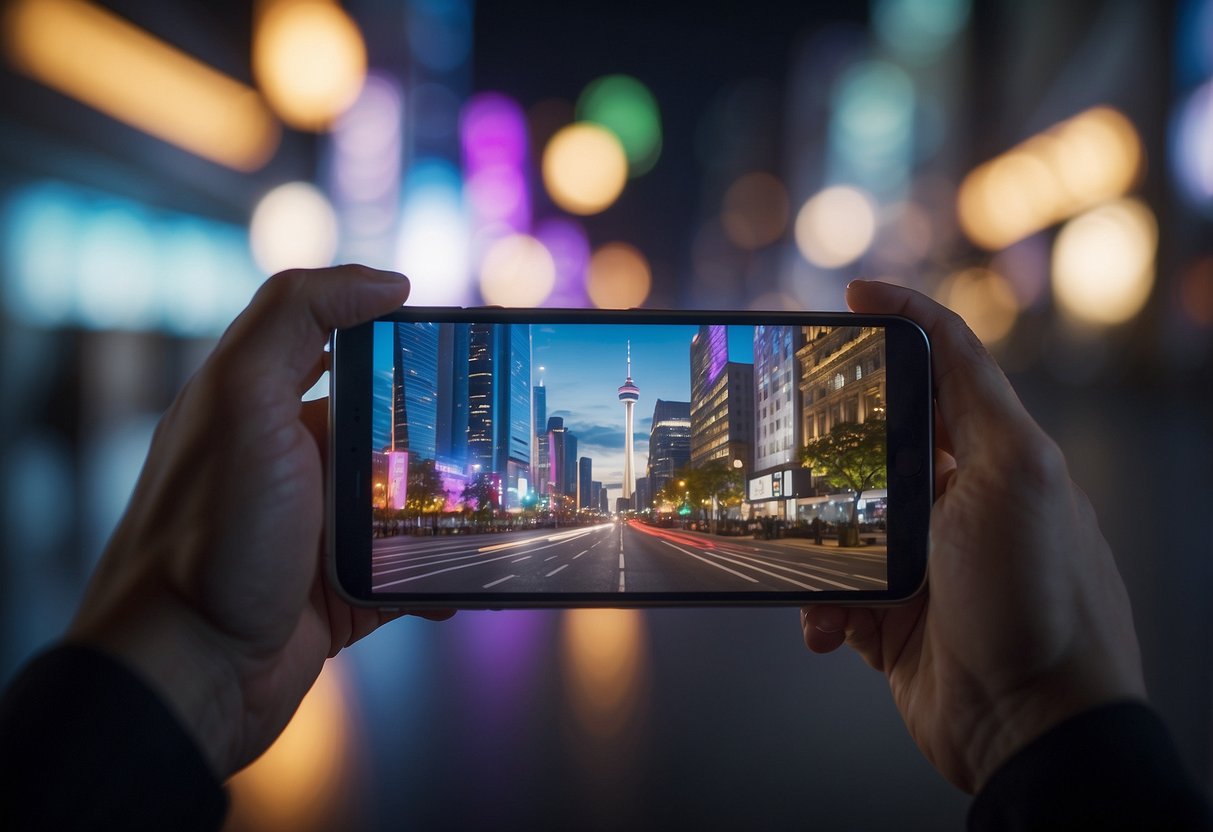
Consumer Use of AR in Retail and E-Commerce
Augmented Reality (AR) is transforming how consumers interact with retail and e-commerce by enhancing the shopping experience, allowing for real-time product visualization, and modernizing traditional retail spaces.
Improving Shopping Experience with AR
AR enriches the shopping experience by allowing consumers to interact with products in a simulated environment before purchase. Shoppers can use AR apps to see how furniture fits within their homes or how clothing looks on their bodies without the need to visit a physical store. Such virtual try-ons reduce the guesswork involved in online shopping and increase consumer confidence in purchases. Additionally, AR can provide detailed product information through interactive displays, making the shopping experience more informative and engaging.
Real-Time Product Visualization
Real-time product visualization is another significant application of AR in retail and e-commerce. Through AR-enabled apps, consumers can visualize products in their intended environment instantly. This feature is particularly beneficial for items like home decor, eyewear, and apparel. For example, by using their smartphone cameras, shoppers can see how a new couch looks in their living room or how a pair of glasses suits their face. This capability not only helps in making quicker purchase decisions but also in reducing the return rates, as consumers have a clearer idea of what they’re buying.
Transforming Traditional Retail
Traditional retail is also being revolutionized by AR technology. Stores are incorporating AR to offer immersive experiences that blend digital elements with physical shopping. Virtual fitting rooms allow customers to try on clothes without physically putting them on, while interactive AR displays can provide additional product information and personalized recommendations. These innovations attract tech-savvy shoppers and enhance brand engagement by making the shopping experience more interactive and enjoyable. Furthermore, AR can help manage inventory more efficiently and guide customers through stores, thus streamlining the entire shopping process.
AR for Entertainment and Gaming
Augmented Reality (AR) is revolutionizing entertainment and gaming by blending real and digital worlds, creating personalized experiences. Future trends in AR gaming promise even more immersive and interactive environments.
Games that Blend Real and Digital Worlds
AR games like Pokémon Go leverage real-world locations, encouraging users to explore their surroundings. Players use their smartphones to catch digital creatures superimposed on real-world settings.
This creates an engaging experience that combines physical activity with digital gameplay. The blending of real and digital worlds is expected to expand, incorporating more complex virtual characters and interactive elements. This could lead to new genres of games that seamlessly merge with players’ environments, enhancing immersion and interactivity.
Creating Personalized Entertainment Experiences
AR technology allows for highly personalized entertainment experiences where content adapts to individual preferences. Users can customize how they interact with AR media, tailoring experiences to their tastes and moods.
For instance, in AR-enabled concerts or sports events, spectators can receive real-time stats, choose different viewing angles, or even bring virtual elements into reality. This personalization extends to gaming, where players can modify the game’s environment or character interactions based on their preferences, resulting in a more engaging and unique experience.
Future Trends in AR Gaming
Future trends in AR gaming point toward more advanced interactions and enhanced realism. Companies are developing AR glasses and other wearable devices to provide a more seamless experience.
Upcoming AR games might feature more sophisticated AI, allowing digital characters to interact more naturally with their surroundings and players. This progression is expected to make AR gaming even more immersive. Multi-user AR experiences are also potential game-changers, enabling players to interact within the same AR space, fostering social interactions in digital and real-world hybrid environments.
Augmented Reality in Design and Engineering
Augmented Reality (AR) is revolutionizing design and engineering by enhancing 3D modeling, improving construction methods, and enabling innovative solutions. It allows professionals to visualize complex structures and collaborate more effectively.
3D Modeling and Visualization
AR significantly improves 3D modeling and visualization in design and engineering. By overlaying digital models onto real-world environments, it helps designers and engineers to see potential projects in a more tangible way. They can manipulate 3D models in real-time, accommodating design changes without the need for physical prototypes.
This ability enhances precision in design and shortens the development cycle. Engineers can also use AR to conduct spatial analysis, ensuring components fit correctly within a given space. The immersive nature of AR assists in identifying potential issues that might be missed using traditional methods.
Impact on Construction and Architecture
AR is transforming construction and architecture by enabling more efficient project management and real-time collaboration. On-site workers can use AR glasses to see 3D models overlaid on the physical site, aiding in accurate installations and reducing errors. This technology allows for virtual walkthroughs, helping stakeholders to visualize the final outcomes before actual construction begins.
It also supports precision in alignment and materials placement, improving quality and reducing waste. Additionally, AR facilitates better communication between team members, as they can share detailed visual data instantly, leading to faster decision-making and project completion.
Innovative Engineering Solutions
AR fosters innovative solutions in engineering by enabling the integration of virtual simulations with real-world applications. Engineers can test different scenarios and see their impact in real-time, leading to more robust and reliable solutions. For instance, maintenance tasks can be streamlined using AR-guided instructions, improving safety and efficiency.
The use of AR in remote assistance allows experts to provide real-time support, reducing downtime and travel costs. This capability is particularly beneficial in complex systems where real-time guidance can prevent costly errors and improve the maintenance process.